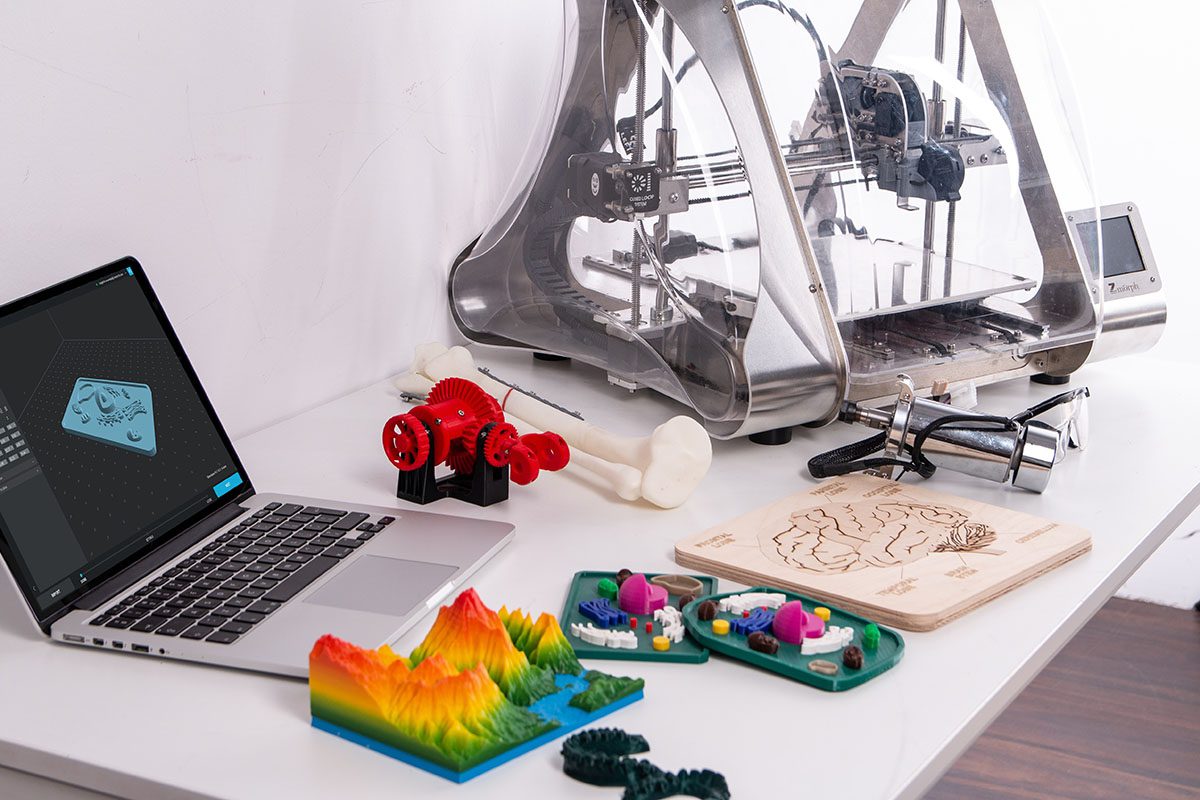Technology in the art room can be a useful tool for teaching, learning, or making art! It can enhance creative learning and pave the way for new pedagogical practices. But this also opens up the door to many more questions than answers. How much technology is too much? Should there be a technology limit in a creative space? Does the 21st-century art teacher need to be well-versed in different types of technology? How does incorporating technology and digital artmaking transform what art and artmaking look like? Let’s explore the answers to these questions and more!

Technology-enhanced learning (TEL) is a learning and teaching approach that uses technology to strengthen the learning experience. The most common form of technology used is educational software, apps, and e-learning services. Because TEL enhances learning, the human component of a teacher and face-to-face instruction is still vital. Authentic learning is still the primary goal and technology is not the end-all-be-all.
Our students have grown up using and owning technology and it is second nature to them. While non-technology processes and skills are valuable for students to learn, they are most accustomed to digital screens. It is one way we can meet them where they are and with something familiar.
We all use technology at several points in our day, so let’s say it’s safe to assume we can agree with our students that technology can make our personal lives easier and more efficient. Figuring out what technology resources and products to use in the art room and how much to use them can be a whole different ballgame! Because there are so many options, it can quickly become overwhelming and intimidating. After all, many of us became art teachers because we love art and not necessarily because we wanted to be IT assistants or technology facilitators.
Let’s go over some tips on how to use technology responsibly and effectively in the art room and then break down some of the major technology options you can bring to your students this year.
For a deeper look at educational technology trends and more ways to partner with technology in the art room, enroll in the graduate course, Technology in the 21st-Century Art Room. At the end of this course, you will have a technological toolkit of practical, high-level classroom materials that you can implement immediately.
If you’re looking for smaller ways to “dip your toes” into the technology pool, watch the following Packs in PRO Learning and check out the following Collections in FLEX Curriculum:
- Infusing Technology into Your Practice Pack
- Enhancing Artworks With Digital Integration Pack
- Innovating with Digital Color Collection
- Incorporating Basic Technology Collection
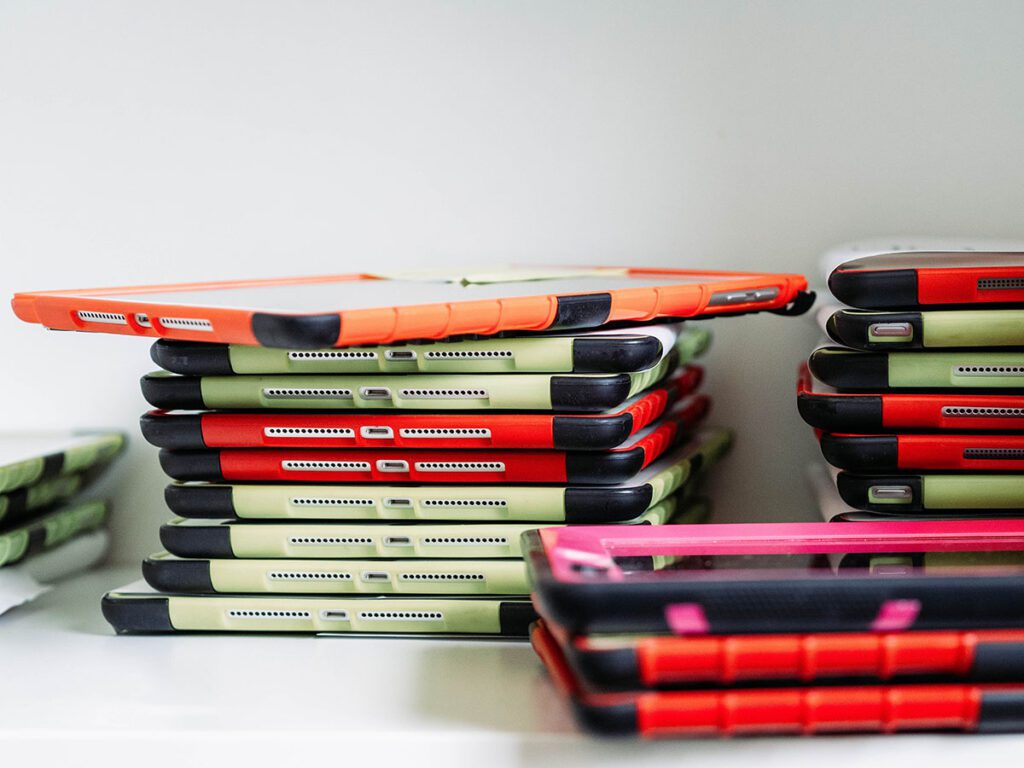
Here are some tips on how to use technology effectively in the art classroom:
- Start small! Pick one game or feature you can implement at a time.
- Give yourself a pep talk! Do not dismiss a technology lesson or component because you feel inadequate. Part of being a great art teacher is modeling that we are always learning too!
- Play with the app, software, or platform before rolling out a lesson with students to troubleshoot the process and anticipate any issues ahead of time.
- Prepare for the unexpected and have a backup plan in case the technology fails or the internet goes down.
- Collaborate with a technology instructor or another teacher who is tech-savvy to decrease the pressure.
- Plan how much presence the technology at hand will have in your lesson. Will it provide self-paced instruction for each student? Will it be a quick activity to hook students? Will the bulk of the artmaking be digital?
- Determine how you will assess student work and if you will accept work digitally, physically, or both.
- Consider allowing technology and non-technology choices for each assignment. This prevents students without access to devices or resources from feeling singled out. It also promotes choice so students can select how they learn best.
- Guide students on digital citizenship and how to research online responsibly. Unmonitored technology can lead to negative health effects regarding weight and sleep and it can also expose students to inaccurate and unsafe content.
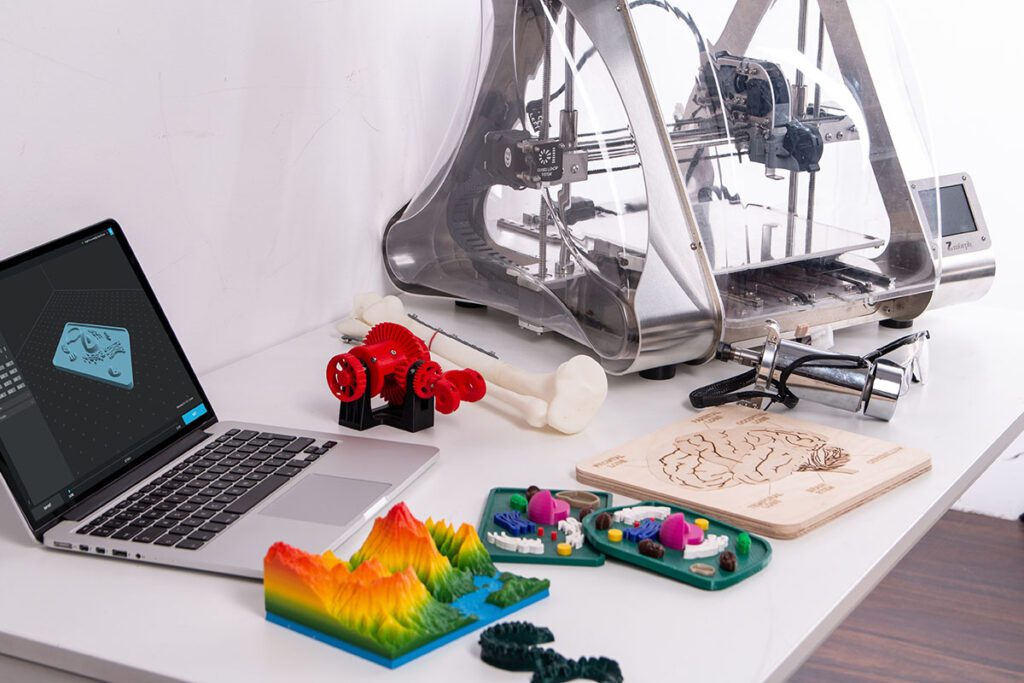
Here is a list of some apps and interfaces you can use in the art classroom:
- Google Platforms (Drawings, Slides, Docs, Classroom)
This is a great starting point, especially if your district uses Google. Create basic documents, collaborative assignments, slide presentations, or even simple digital designs. - Adobe Platforms (Illustrator, Photoshop, Fresco)
These are more expensive, but can really prepare students for careers in digital artmaking and graphic design. - Pixlr
This is a great option if you don’t have the budget for Adobe. Essentially, it’s a free online version of Adobe Photoshop! - Procreate
This platform can create digital designs on an iPad. Read this article and listen to this podcast episode for ways to get started. - Tinkercad
This is a student-friendly, online 3-D design platform for 3-D printers! - Canva
A free online graphic design interface that allows users to create posters, cards, bookmarks, and more. - STEAM Kits
Technology can bring science, math, and art together with Makey Makey kits, Edison Robots, Lego SPIKE, and more. - SPLICE
A free app where students can edit digital photos. - AI Interfaces (ChatGPT and Dall-E 2)
There are many emerging AI-based platforms! Read this article and listen to these two podcast episodes (1, 2) for a more in-depth look at the pros, cons, and art room options.
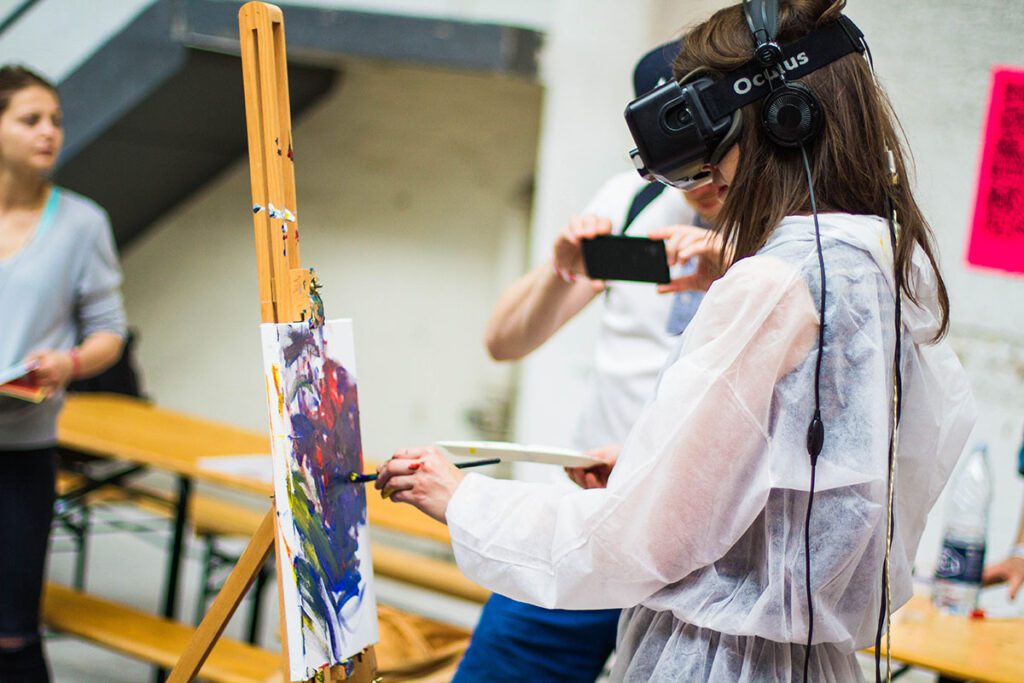
After all of this technology talk, you may be considering going back to a tech-free classroom or unplugging from screens. We get it and there is nothing wrong with moving things in the other direction. In fact, some research suggests that students may not be developmentally ready to handle technology and are missing out on the more traditional aspects of childhood play. Teaching students skills like using their imagination, creating games, and generating ideas can lead to an increase in cognitive, literary, and social skills.
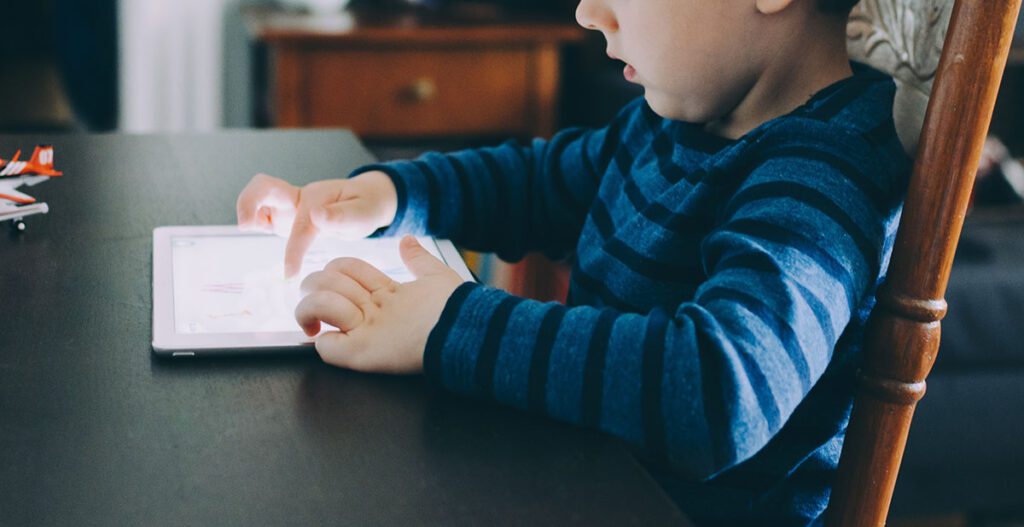
When it comes to our curriculums and art rooms, cultivating an appreciation for visual art and instilling 21st-century skills through artmaking is still the most important part of our jobs. It is also our job to figure out how to strike a healthy balance between traditional face-to-face learning and hands-on artmaking processes with emerging technologies. Let’s face it—technology is here to stay. It’s at our fingertips, more accessible than ever, and our students have grown up using it on a daily basis. So, take it one step at a time and remember moderation is key. Model for your students how to play and take risks with new mediums and platforms and that you are constantly learning and growing too. As you embrace new technologies this school year, give yourself grace and have fun!
How do you use technology in the art classroom?
How do you find a balance between traditional art mediums and digital platforms?
Magazine articles and podcasts are opinions of professional education contributors and do not necessarily represent the position of the Art of Education University (AOEU) or its academic offerings. Contributors use terms in the way they are most often talked about in the scope of their educational experiences.
